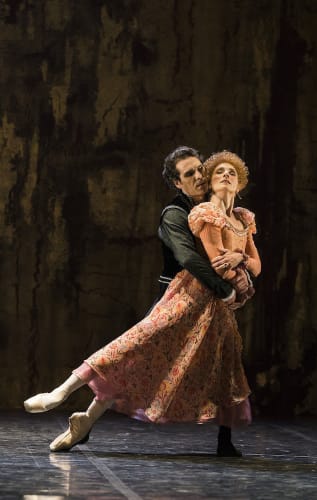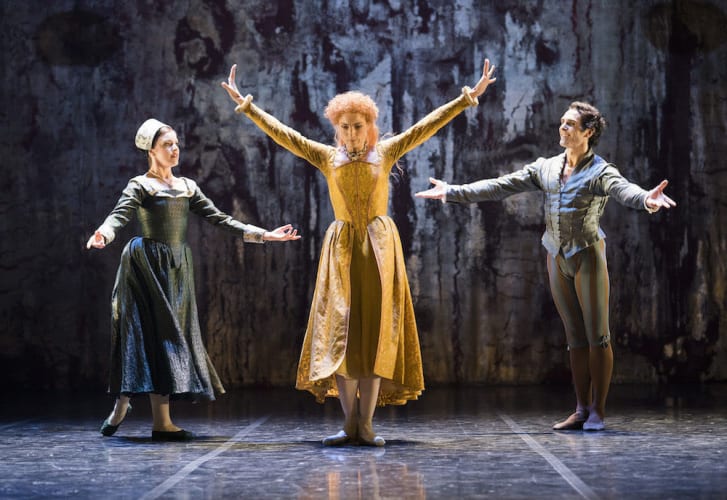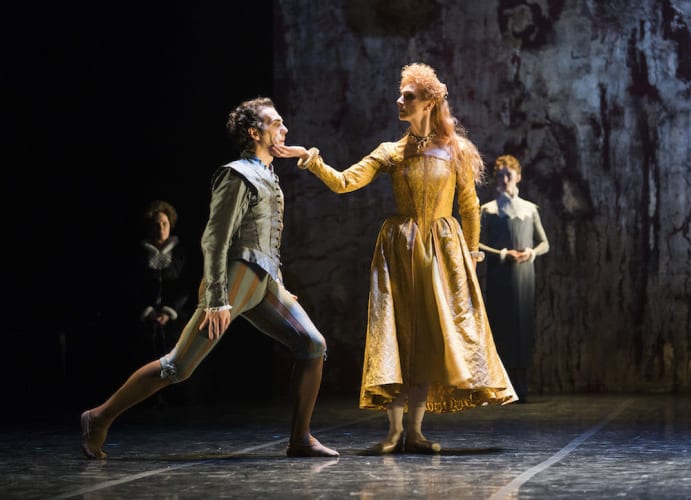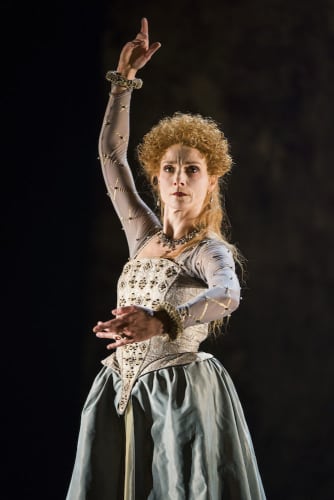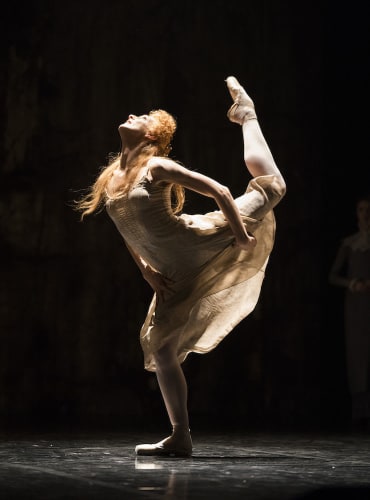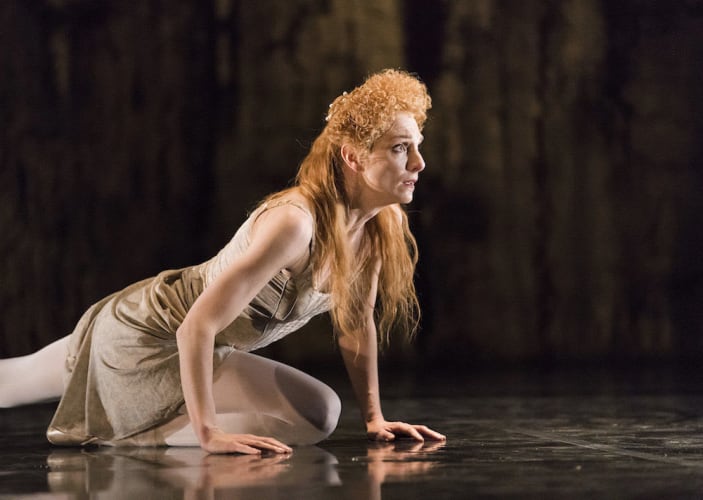An interval-free ninety-minute dance-theatre work, Will Tuckett’s Elizabeth is a restrained masque, a tasteful, mildly wicked, courtly entertainment fit for the court of the inscrutable Queen Elizabeth I if it were not so personal—her disastrous love life and local gossip.
I wondered how it would translate from its first outing in a 2013 Gala in the Old Royal Naval College’s Painted Hall in Greenwich, under which lie the remains of the Tudor Greenwich Palace where Elizabeth was born in 1533.
After that site-specific production, Elizabeth had a short run at the Royal Opera House’s tiny Linbury Studio in January 2016, the last show there with Carlos Acosta before its closure for improvements. A commemorative occasion again, one celebrating Shakespeare’s 400th anniversary.
How would this chamber piece transfer to the cavernous wide stage of the Barbican? Remarkably well thanks to clever staging by Tuckett and superb stage-moulding lighting by Paule Constable and Ben Pickersgill.
Its colours shifting with the mood, a large uncredited painting (or is it a projection?)—an abstract ‘Gerhard Richter’ gilded in Klimtian shimmering gold—hangs at the back, the grandeur of Elizabeth’s court intimated on an otherwise bare stage.
Fay Fullerton’s costumes—not a faithful re-creation (fabrics would be too heavy) but a deeply researched response to the period, their ruffs and cuffs in deceptive organza and net, their blacks, greys, gold, silver, and royal cerise—add to the picture, creating a mobile canvas and frame for the central role.
The rest is conjured from the air, from words, music and movement. Composer Martin Yates has attempted to evoke the music of the time for solo cello (Raphael Wallfisch), food for the soul to complement that of the alert mind, words spoken and sung by three women (ladies-in-waiting Samantha Bond, Sonya Cullingford, Katie Deacon the monarch’s reflecting mirrors) and a baritone (Julien Van Mellaerts).
The words, the framework and timeline, are taken from Elizabeth herself, from Robert Dudley Earl of Leicester, the Duc D’Anjou, the flashy Sir Walter Raleigh and the impetuous Earl of Essex, with whom she dallied, blended with “what her contemporaries wrote and said about her and them.”
What attracted Tuckett was “her strength of character politically and in matters of court, combined with her weakness for men that treated her badly”. “Her love of dance, the arts and her quick-witted, wicked sense of humour—all evident in her own writing”.
Librettist Alasdair Middleton adds extra flavour with supplementary material from plays of the period, namely John Banks’s 1682 post-Elizabethan (she died in 1603) The Unhappy Favourite or The Earl of Essex.
Amusing and witty words, delivered with a twinkle in the eye by chief lady-in-waiting Bond, some repeated in refrain, but what about the dance? With so many rich layers, is Tuckett’s choreography the icing on the cake or its basic ingredient?
With his usual intelligence (Wind in the Willows, and his memorable Widow Simone), he leaves Zenaida Yanowsky’s Elizabeth to emote, responding to events around her—to her wooing by unreliable men, the masques laid on for her, to intrigues and double-dealing—with intense dumb show gestural language and mime.
The humour he leaves to the male roles, or rather role, for the four preening men (“humility is not one of Leicester’s virtues”) are danced by one man in many guises—now that’s a comment in itself - and her brother to boot. Yury Yanowsky, of Boston Ballet, is Zenaida's partner and he dances with silent screen relish all the fake actors in Elizabeth’s biopic.
Elizabeth nearly married the young Duc D’Anjou but he died (her letter of condolence to his mother is revealing), the others betrayed her or were married. She was very wise to declare that she was married to her country and its people. Safer and less traumatic, but it came with an emotional price.
Death—another male, her last suitor—kisses her hand and takes her away. In 2016, this chimed with Acosta’s role as The Messenger in Kenneth MacMillan’s Song of the Earth. The cello has the last word.
Her face, eyes and eloquent body revealing her disposition, her joy, suspicion, anger and anguish, Zenaida is a commanding presence, rising on pointe above her subjects. Tuckett blends the airiness of sweet music with the concreteness of words, the airiness of classical ballet with grounded contemporary dance, as maid Katie Deacon fusses and dances around her.
The cast is excellent; the concept alluring; the reality is that it needs more than one viewing to absorb every detail. I fear some of the words may sail by as one is concentrating on the movement or the music. I want to watch the cellist in his pool of light, too, but dare not take my eyes off Zenaida. A libretto, of course, to read beforehand, would be useful.
A Gesamtkunstwerk, a synthesis of several art forms, an inquiry into this proto-feminist monarch’s inner life, Elizabeth requires quite a lot of concentration on the part of the viewer / listener to keep all the essential balls in the air: two dancers, three female actors and a baritone, a cellist, his page-turner, and quite a lot of information (references to Shakespeare’s Richard II for obvious treasonous reasons) woven into a rich tapestry I’d like to unravel strand by strand.
